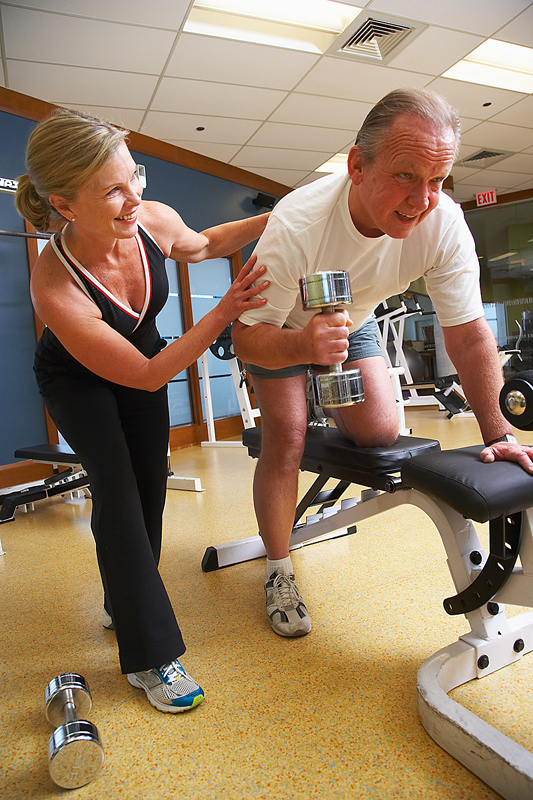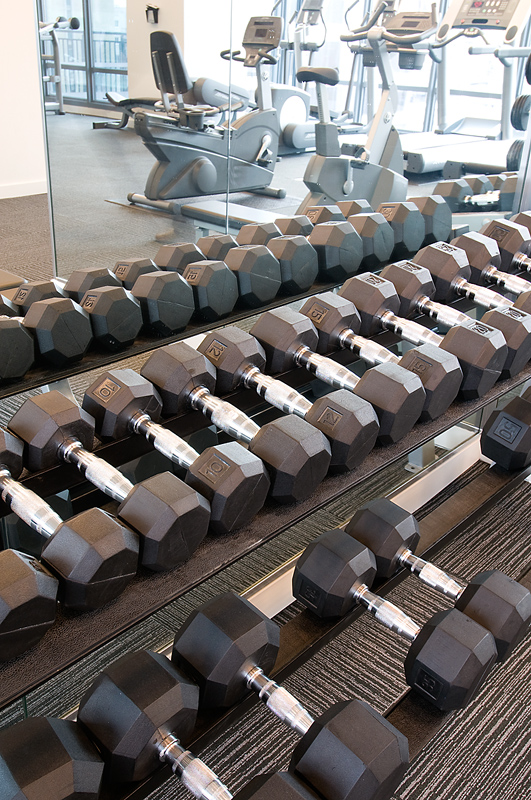You eat well and exercise nearly every day. Maybe you’re overcoming a few old issues, or maybe a sedentary lifestyle, or maybe being fit has always been part of your life. All seems to be going well and you feel unstoppable when out of nowhere, a mysterious injury puts you out commission.
Absent incontestable evidence, the mind spins looking for a culprit. “It wasn’t me, so it must be something else,” we think. This emotionally-charged search for the offender usually focuses on three escape goats:
The Fitness Professional

“My trainer messed me up,” a vast number of people say, pinning their fitness trainer or group exercise instructor as the cause of their discomfort.
While I’ll admit there are a few who have no business guiding people into exercise, most fitness professionals constantly assess for risk factors and never push their clients beyond unreasonable standards—doing otherwise would be self-destructive. Whenever blame is steered in that direction, I enquire more.
The results rarely surprise me. The grand majority of those who claim to have been hurt by their trainers were already predisposed for an injury—by circumstances beyond the control of the fitness professional—and it was only a matter of time. These folks would’ve just as easily found an injury from getting up from bed as from picking up a dumbbell.
When these folks finally realize the futility of blaming the fitness professional, they get baffled but instead of trying to find the cause of their problem, they’ll shift blame to the next escape goat: The dangerous exercise(s) they did!
The Exercise or Modality
What exercises are the safest? What are the most dangerous? What methods are most likely to hurt you? These are some of the most common—and pointless—questions you’ll find in the world of fitness.
Take for instance, squats. Are they safe? It depends on who you ask. Some will tell you that squats are the irreplaceable foundation of every exercise program; some will tell you that squats are worthless. Some will tell you to never squat below parallel; some will tell you that unless you’re squatting deep, you’re wasting your time.
So, who’s right and who’s wrong?
All of them!
The aforementioned arguments are but a mix of facts and heavy emotional attachments. Truth is, people with the proper inherent mechanics for squats will benefit tremendously from the exercise. Others, lacking such innate advantage, should modify squats significantly—or avoid them altogether.
The same can be said of other emotionally-charged arguments in the merits of modality applicability and perceived safety. Some will tell you that explosive/ballistic training will destroy you; others will tell you it’ll keep you safe on the playing field.

How many people do you know who have gotten injured while performing explosive training? I know plenty! But I also know plenty of others who got injured while engaged in activities perceived as safe.
What does this mean? Nothing other than common sense should always rule. Explosive/ballistic exercises are dangerous only if you lack the preparation, strength, and skill to execute them. When properly applied, they’re indispensable for performance. The grand majority of cases attributed to explosive/ballistic exercise that I’ve treated were the result of the individual getting involved despite knowing the capacity wasn’t there. That’s not an issue of modality safety but of foolishness trumping reason.
It’s incongruous to make all-inclusive accusations against any particular modalities—as if everyone had the same capacity/predisposition or list of risk factors. “Don’t do CrossFit!” the pundits say. “It’s dangerous!” Or how about: “Stay away from yoga, it’s bad for your knees.”
The cases I’ve seen in my practice give me ample practical evidence to refute such statements and stumble upon unexpected findings. For instance: Care to guess who sustains the greatest number of knee conditions classified as arthritis?
Not weightlifters, not runners, not cyclists, but fans of the elliptical! Under some illusion of safety, people engage their joints in the same motor pattern for extended time periods. Is it a surprise they inflame their joints? Not really. And no, I didn’t say that the elliptical is dangerous. It’s never the equipment.
And that brings us to the third escape goat.
The Exercise Equipment

“Eek!” many people say the first time they look at a kettlebell. “Those things look dangerous!” No piece of equipment is exempt from such reactions. “Ugh! The leg extension tore my ACL!” a client once said. “The leg-press machine messed up my back!” another one claims. “I don’t like the fat bar. It wrecked my neck!” yet another one adds.
I can only conjure images of a kettlebell held by a chain and muzzle, growling its menace at passersby, or a fat bar hiding in a corner, ready to ambush their victims and wrap around their necks akin to an anaconda claiming its prey.
Irreverent, I know. But that’s how I cope with these bizarre scenarios that attribute malicious intentions to inert objects. Granted, some pieces of equipment make you wonder whether the designer had any understanding of biomechanics—but experience has shown me that most exercise equipment has been carefully designed and planned with a specific goal in mind.
So, are kettlebells a dangerous ?
The answer is no—if you have mastered the skills and progressions to make kettlebell lifting productive. The same can be said of other equipment. Did you take the time to set the equipment in a way that best suits your structure? More often than not, patients blaming a specific piece of equipment have a history that shows they were an incident waiting to happen, and that it happened at a particular piece of equipment, not because of the piece of equipment. It is the Straw Effect.
And it is the Straw Effect what concludes this series.
Until next time, may you enjoy a fit and pain-free life!
